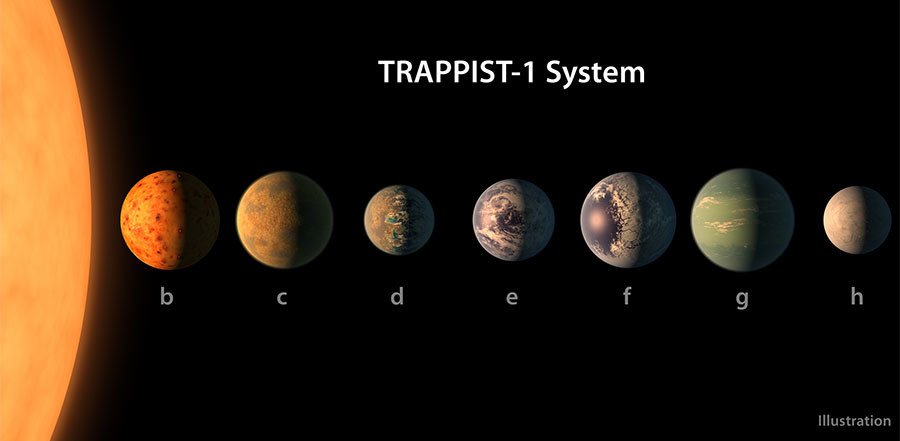NASA telescope reveals secrets of TRAPPIST-1 exoplanets

NASA’s Kepler telescope has confirmed crucial details about the orbital pattern of the seven newly discovered exoplanets in the TRAPPIST-1 system, as well as providing new insight into the system’s least understood planet, TRAPPIST-1h.
Astronomers from the University of Washington were able to confirm a regular orbital pattern using data collected by the telescope. The team found that, at six million miles from its dwarf star, TRAPPIST-1h – the outermost of the seven exoplanets – does not lie within the habitable zone and is likely far too cold for mere humans. The team also confirmed ‘planet h’ orbits its TRAPPIST-1 star every 19 days.
READ MORE: #7NamesFor7NewPlanets: NASA looks for help naming new discoveries, internet obliges
“It’s incredibly exciting that we’re learning more about this planetary system elsewhere, especially about planet h, which we barely had information on until now,” said Thomas Zurbuchen, associate administrator of NASA’s Science Mission Directorate.
The international team analyzed raw Kepler data immediately after it was released by NASA on March 8 and published their findings in the Nature Astronomy journal on Monday.

“This finding is a great example of how the scientific community is unleashing the power of complementary data from our different missions to make such fascinating discoveries,” Zurbuchen added.
Using data collected previously by the Spitzer Space Telescope, the team first identified a “complex but predictable” pattern in which the six innermost planets orbit the star.
How the future @NASAWebb will study 7 Earth-size planets’ atmospheres for ozone & other signs of life #TRAPPIST1https://t.co/8JtjzClTgapic.twitter.com/HbZYXUkovS
— NASA Planetquest (@PlanetQuest) March 2, 2017
READ MORE: ‘Unlocking their secrets’: NASA to search for life on TRAPPIST-1 exoplanets
Studying the orbital frequency, the scientists calculated six possible routes planet h could be taking – five of which were eventually ruled out by additional data. Meaning the scientists could predict the planet’s exact orbital period even before Kepler’s observations were released.
NASA first announced the discovery of seven Earth-sized planets, found some 39 light-years away, at a press conference in February. Since then, the race has been on to unlock the system’s secrets.
The space agency plans to study the seven new worlds with the James Webb Space Telescope, scheduled to launch in October 2018. It is hoped the super-powerful instrument will help scientists discover if the planets could possibly support life.












